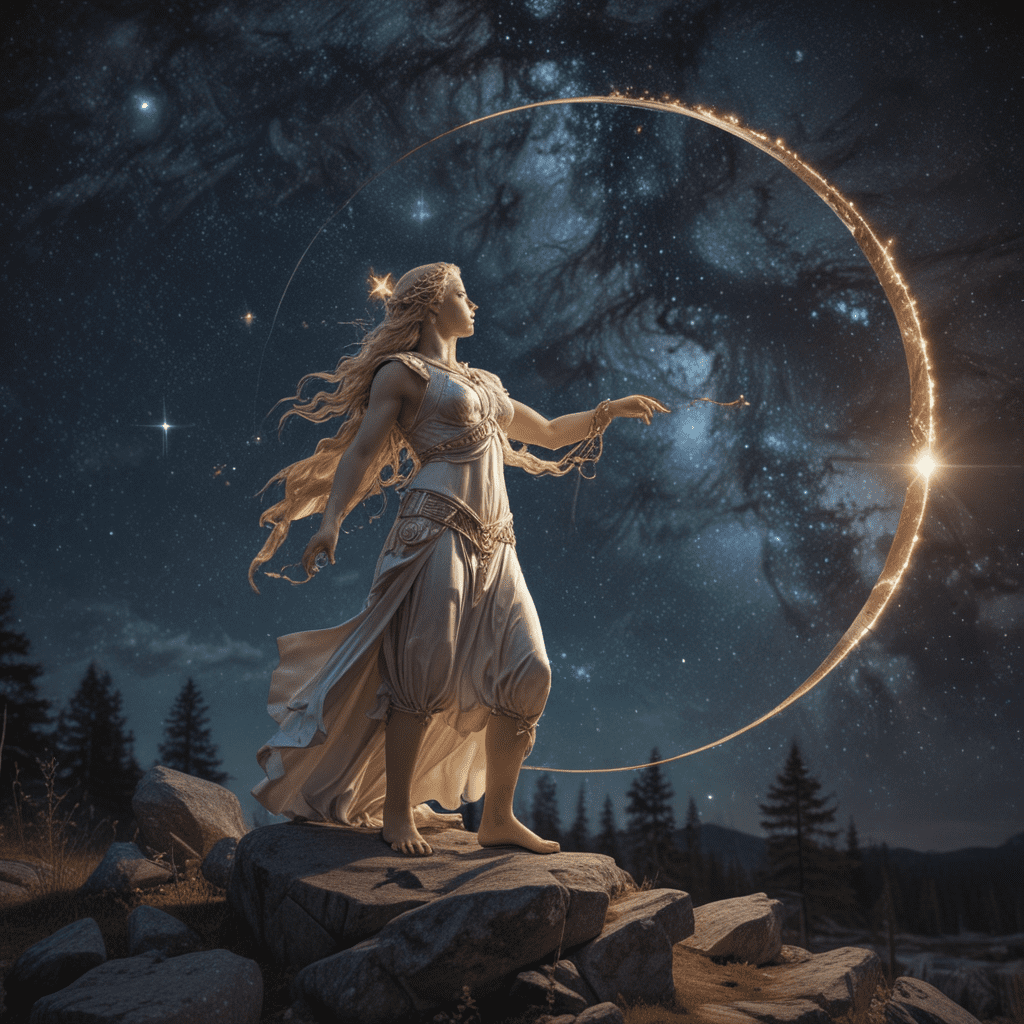The Connection Between Finnish Mythology and Astronomy
Finnish mythology and astronomy are deeply intertwined, reflecting the ancient Finns' keen observations of the night sky and the natural world. This relationship is evident in numerous myths and legends that involve celestial beings and phenomena.
Ukko: The Sky God and Creator
Ukko, the supreme god of Finnish mythology, is also the god of the sky and weather. He is depicted as a majestic figure enthroned in the heavens, wielding a hammer that creates thunder and lightning. Ukko's role as the creator is reflected in myths that describe him as shaping the world and giving life to humans and animals.
The Celestial Dome: The World of Ahti
According to Finnish mythology, the sky is a vast dome known as Ahti's World. Ahti, the god of the sea, is believed to reside in this celestial realm, which is said to be filled with islands, forests, and rivers. The celestial dome is thought to be the abode of the stars, the sun, and the moon, and it is often depicted as a place of great beauty and wonder.
6. The Pleiades: Seulaset
In Finnish mythology, the Pleiades star cluster is known as Seulaset, which translates to "the sieve." According to legend, Seulaset was a beautiful maiden who was chased by a bear. To escape, she turned herself and her sisters into stars. The seven stars of the Pleiades represent the sisters, while the faint star near them represents the bear.
7. The Milky Way: Linnunrata
The Milky Way is known as Linnunrata in Finnish, which means "bird's path." According to myth, Linnunrata was created by a bird that flew across the sky, dropping feathers along its way. These feathers became the stars that form the Milky Way.
8. Aurora Borealis: Revontulet, the Fox Fires
The aurora borealis is a natural phenomenon that lights up the night sky in high-latitude regions. In Finnish folklore, the aurora is known as Revontulet, which translates to "fox fires." According to legend, Revontulet are caused by a magical fox that runs across the snow, creating sparks that light up the sky.
9. Constellations and Star Lore
Finnish mythology includes numerous stories and beliefs associated with constellations. The most prominent constellation is Otava, also known as Ursa Major, which is believed to represent a bear. Other important constellations include Orion, which is said to represent a giant hunter, and Gemini, which represents two brothers.
10. Astronomical Influences on Finnish Folklore and Beliefs
The celestial bodies and phenomena of the night sky had a significant influence on Finnish folklore and beliefs. The phases of the moon were used to determine the best time for hunting, planting, and other agricultural activities. The position of the sun and stars was used for navigation and to mark the changing seasons. Astronomical events such as eclipses and comets were often seen as omens of good or bad luck.
FAQs:
Q: What is the connection between Ukko and the night sky?
A: Ukko, the supreme god of Finnish mythology, is also the god of the sky and weather. He is believed to reside in the heavens and to control thunder, lightning, and rain.
Q: How did the Finns explain the Milky Way?
A: According to Finnish mythology, the Milky Way (Linnunrata) was created by a bird that flew across the sky, dropping feathers along its way. These feathers became the stars that form the Milky Way.
Q: What is the origin of the name Revontulet?
A: The name Revontulet, meaning "fox fires," comes from the Finnish folklore that attributes the aurora borealis to a magical fox running across the snow, creating sparks that light up the sky.
Q: What constellations were significant in Finnish mythology?
A: Otava (Ursa Major) was the most important constellation, representing a bear. Other significant constellations included Orion (a giant hunter) and Gemini (two brothers).
Q: Did astronomy influence everyday life for the ancient Finns?
A: Yes, astronomical observations were essential for everyday life. Moon phases dictated farming and hunting practices. Sun and star positions aided navigation, and celestial events like eclipses were interpreted as omens.



